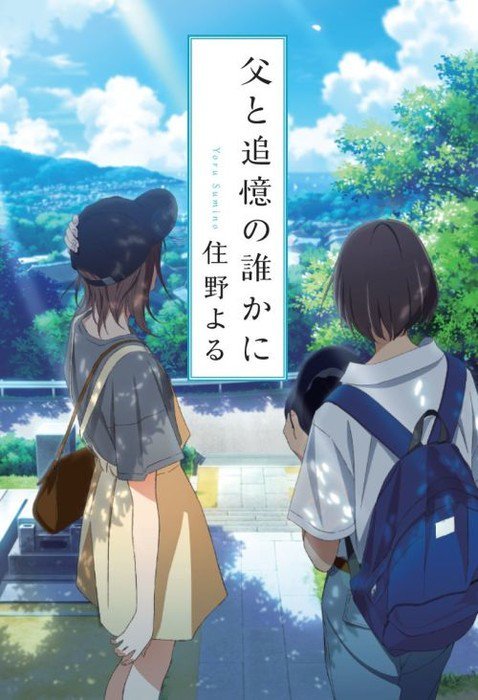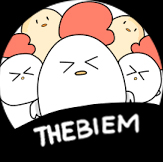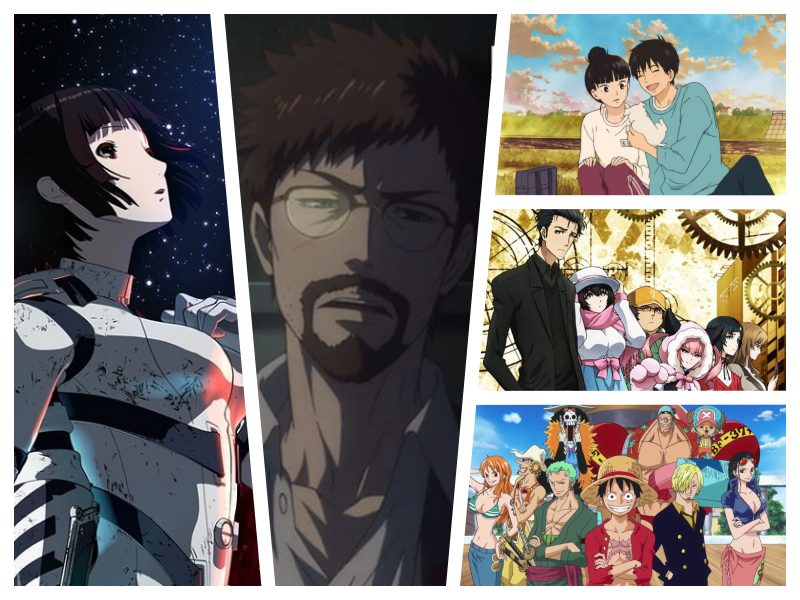Shoujo, Shounen, Seinen, Josei and what not! A lot of such terms pop up when we come across anime and manga. Although it is not very essential to understand under what demographics the anime you are watching or the manga you are reading falls under, it can be quite helpful to know it. Knowing the demographics of the series helps you to better appreciate the anime or the manga. Before we begin to talk about the various types of anime and manga demographics let us go through some basics first.
Understanding Demographics
What does demographics mean? Simply put, demographics is the statistical study of the population.
In the early days. the manga was only available as a serialization in various magazines which targeted specific demographic groups. Even now, a lot of manga has to rely on magazines to be discovered. And this also rubs off to anime. Especially since most anime are manga adaptations. So it makes much sense for an author to specify the demographics he is intending to aim for in order to choose the appropriate magazine for his manga.
Now, it is important to also understand that more often it is very difficult to restrict an anime or a manga to certain genres and categories and at times even the specific demographics. This is especially true due to the growing number of hybrids. Hence, the officially specified demographics only serve as a broad recommendation and it does not restrict any gender or demographic from watching or reading a series. Individual readers are really the only ones to determine such things when you look at it this way.
Major Anime and Manga Demographics
Shonen, Shoujo, and Seinen are some of the popular/major demographics that anime and manga fall under. Let us briefly understand them by looking at the age-wise and gender-wise specific targeting of each major anime and manga demographics.
Kodomo: For little kids or young children, under about 8.
Shounen: For young teenage boys, roughly between 12-18.
Seinen: For young adult males or younger men, roughly between 18-40.
Shoujo: For young teenage girls, roughly between 8-18.
Josei: For adult females or younger women, roughly between 18-40
Seijin/Ero Manga: Adult manga for males.
Redisu/Lady’s Manga: Manga for young adult females.
Doujinshi Manga: Manga publication by amateurs.
Gekiga: Focusing on serious topics geared toward mature audiences.
Silver & Golden: Manga for older readers.
Now, let us look at some of these in detail:
Shounen
Action and adventure is the primary focus of this demographic. Shonen literally means “few years” and targets young boys under the age of eighteen. It is very common for anime and manga of this demographic to have a young male hero in the midst of huge competition and counting on teamwork. Nevertheless, we also have Shounen series like Claymore, with female protagonists. You will also find ecchi, harem, comedy series falling under this demographic.
Some of the best Shounen anime and manga are One Piece, Naruto, Dragon Ball, Fairy Tail, Bleach, Boku no Hero Academia and Attack on Titan.
Seinen
As this demographic targets young men between 18-40, it covers a lot of genres and can seem confusing. Generally, we will find the anime or manga to be of more psychological in nature and they tend to carry mature themes. Slice-of-life and comedy anime or manga fall under this demographic category for other reasons. Themes about the deeper aspects of life, troubles, and challenges young adults face will be the subject matter of these Seinen anime or manga. So you have manga like Yotsuba and the comedy/ parody series like One Punch Man coming under this demographic.
Some of the best Seinen anime and manga are Berserk, Himouto! Umaru-chan, Tokyo Ghoul, Monster, Ghost in the Shell, Akira, and Gantz.
Shoujo
Shoujo refers to “young girl comics” and targets females under eighteen years of age. The focus is generally on the romance and interpersonal relationships of the characters, and often have a female lead. Kaichou wa Maid-sama! is a great example for this demographic. Action and adventure and slice-of-life are also some of the genres Soujo covers. Cardcaptor Sakura and Akatsuki no Yona are some of the popular Shoujo action series while Tonari no Kaibutsu-kun is a comedy Shoujo series. Moreover, many male homosexual love stories fall under Shoujo as well.
Some of the best Shoujo anime and manga are Sailor Moon, Kimi ni Todoke, Fushigi Yuugi, Ao Haru Ride, and Ouran High School Host Club.
Josei
This demographic aims at adult women under 40 years of age. Often the genres are romance or slice-of-life with a great focus on the female side of things. The interpersonal relationships seem more realistic. Themes such as age-gap, adultery, homosexual relations mostly tend to fall under this category. Series with pretty-boy led such as ‘Loveless’ also tend to fall under this. Smut manga and anime with leads that dominate women have recently gained much popularity. Not to mention, they too very much fall under Josei.
Some of the best Josei anime and manga are Chihayafuru, Usagi Drop, Nodame Cantabile, Sakamichi no Apollon, 07-Ghost and Paradise Kiss.
Kodomomuke
Kodomomuke literally translates to “directed at children.” Series under this demographic tend to be touch upon values that are attractive to young minds. With the use of simple yet imaginative stories, the series aims to captivate its young audience.
Some of the best Kodomomuke anime and manga are Doraemon, Pokémon, Chi’s Sweet Home, Heidi, Girl of the Alps, and Heartcatch Precure!.
Other Anime and Manga Demographics/Genres/SubGenre

Apart from the above major anime and manga demographics it also helps us to know about some of the non-typical genres and subgenres related to anime and manga. An anime or manga falling under any demographic can also be from any of the genres and subgenres. There is no limitation that a particular demographic needs to restrict itself to some genres alone.
Isekai
Isekai literally translates to “another world.” It falls under the parent genre of fantasy. The protagonist in this subgenre somehow gets transported and makes it into a different world. This new world tends to have powers and traits as found in the RPG games. The bulk of the isekai anime are an adaptation of light novels. Series such as Sword Art Online also fall under this category even tho there is no physical transportation of the character.
Some of the best Isekai anime and manga are No Game No Life, Log Horizon, The Devil Is A Part-Timer!, Re:Zero,
Harem
In this subgenre, the male main character is seen surrounded by multiple female characters. All of them adore him in their very own way and show attention to him. Most of harem anime fall under the fantasy, comedy, and romance genre. Fan service is very much a given thing.
Some of the best Harem anime and manga are Date A Live, Trinity Seven, The World God Only Knows, To Love-Ru, and Nisekoi.
Ecchi
This subgenre is easy to identify when it is evident that the series is full of sexually provocative scenes. Often the censored versions are aired on TV and only the Blu-ray versions come uncensored. Here too, the bulk of ecchi anime fall under either fantasy, comedy or romance genres. The fan base for both the harem and ecchi anime is quite strong.
Some of the best Ecchi anime and manga are Highschool DxD, Sekirei, Shinmai Maou no Testament, Monster Musume No Iru Nichijou, and Rosario Vampire.
Shounen-ai
Shounen-ai literally translates to “boys love.” The male characters (typically younger boys) in these shows display tender affection for each other. The romance in shounen-ai is generally milder when compared to the more explicit yaoi genre. There is usually more focus on developing romance than actual relationships.
Some of the best Shounen-ai anime and manga are No. 6, Classmates (Doukyuusei), Tight Rope, The Highschool Life of a Fudanshi, This Boy Caught a Merman.
Yaoi
Yaoi is the much more sexually explicit counterpart of shounen-ai. This subgenre covers male-to-male relationships (typically older boys) in a more mature light. There is more emphasis on serious relationships and intimacy.
Some of the best Yaoi anime and manga are Yuri!!! On Ice, Junjou Romantica 2, Love Stage!! (Xanax) , Hitorijime My Hero and Tyrant Falls in Love.
Shoujo-ai
Shoujo-ai literally translates to “girls love.” The typically young female characters in shoujo-ai anime show love and affection for each other. The romance is usually milder in comparison to the more explicit yuri genre. Shows in this category portray blooming feelings of love and romance rather than intimate relationships.
Some of the best Shoujo-ai anime and manga are Aoi Hana, Blue Drop, Burst Angel, Maria Watches Over Us, Survival Game Club!
Yuri
Yuri is essentially the more mature and explicit version of shojou-ai. The female characters are typically older and the series examines their more mature relationships.
Some of the best Yuri anime and manga are Sono Hanabira ni Kuchizuke wo: Anata to Koibito Tsunagi, Sakura Trick, Strawberry Panic!, Valkyrie Drive: Mermaid, and Kuttsukiboshi.
Mecha
Mecha stands for mechanical signifying machines or robots. The genre has two subcategories; “super robot”, and “real robot”, where they are very realistic with human-like qualities. A mecha anime/manga primarily tell its story with the use of robots or humans with a mechanical suit. Mecha is often seen alongside the military, sci-fi, and action genre.
Some of the best Mecha anime and manga are Code Geass, Mobile Suit Gundam, Neon Genesis Evangelion, Gurren Lagann, and Darling in the FranXX.
Hentai (18+)
Hentai literally translates to “pervert” and don’t be mistaken, all material under it comes under the R-18 (mature) domain of the anime world. It commonly depicts nudity and highly explicit content. If you have found ecchi and harem anime to be lacking in plot, here be assured to find little to no plot. The focus here is exclusively on explicit sexual content more than anything else. Nevertless, this category can sometimes have its bright moments. Some of the series run into multiple episodes and have a fan base.
Conclusion
So with this, we have reached the end of this article. We would love your feedback on this article. Also, Kuma has made an article on the light novels getting an anime adaptation this year. Be sure to check it out.


14th May. 2019 at 5:50 AM
I just wanna day this information on Shonen and Shojo age range is incorrect. It’s not for ages 8 to 18. It’s for ages 12 to 18. Saying it’s for young teenage boys and having 8 and over added in makes no sense. But other sources state they are for ages 12 to 18. I think you should change that please. Thank you.